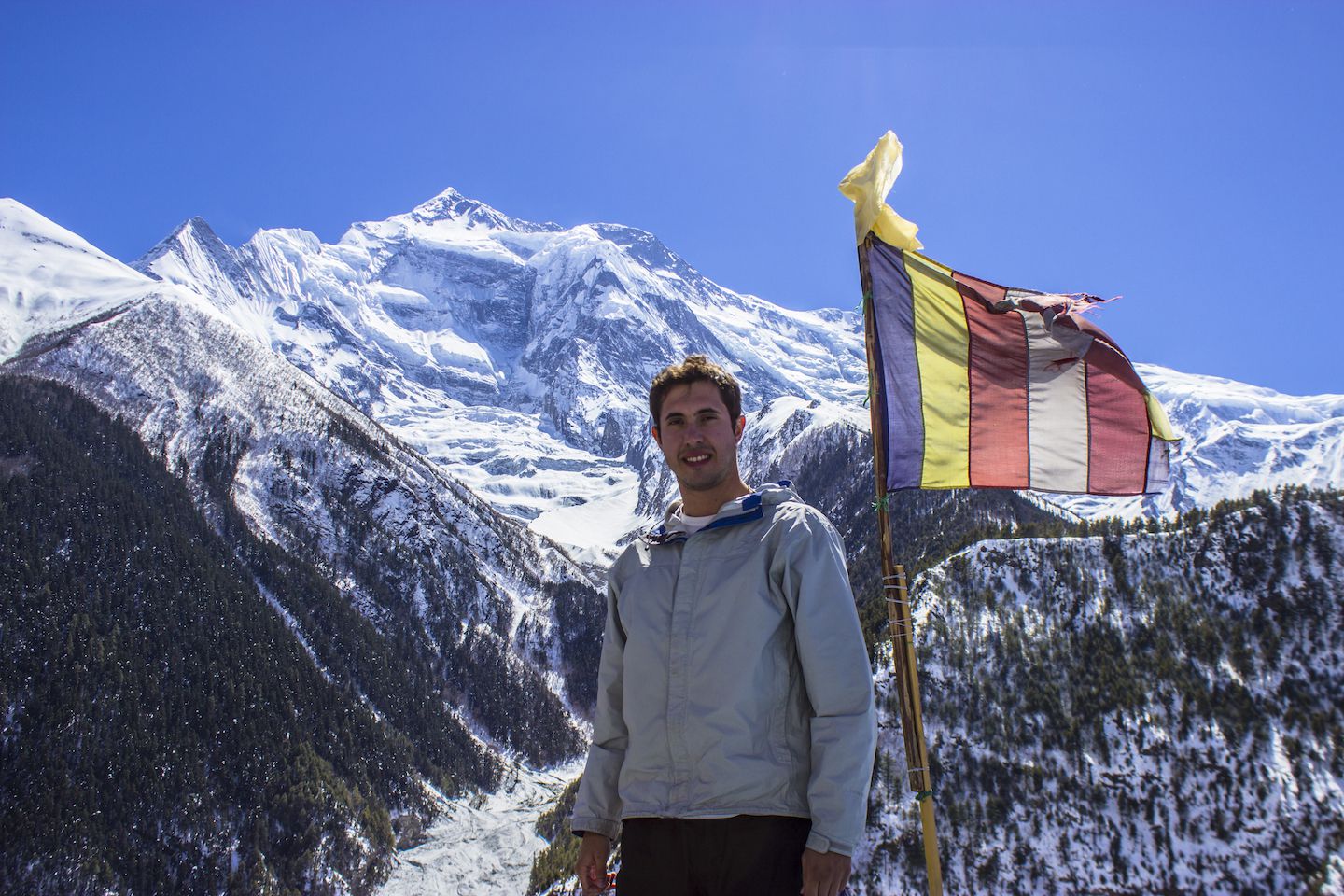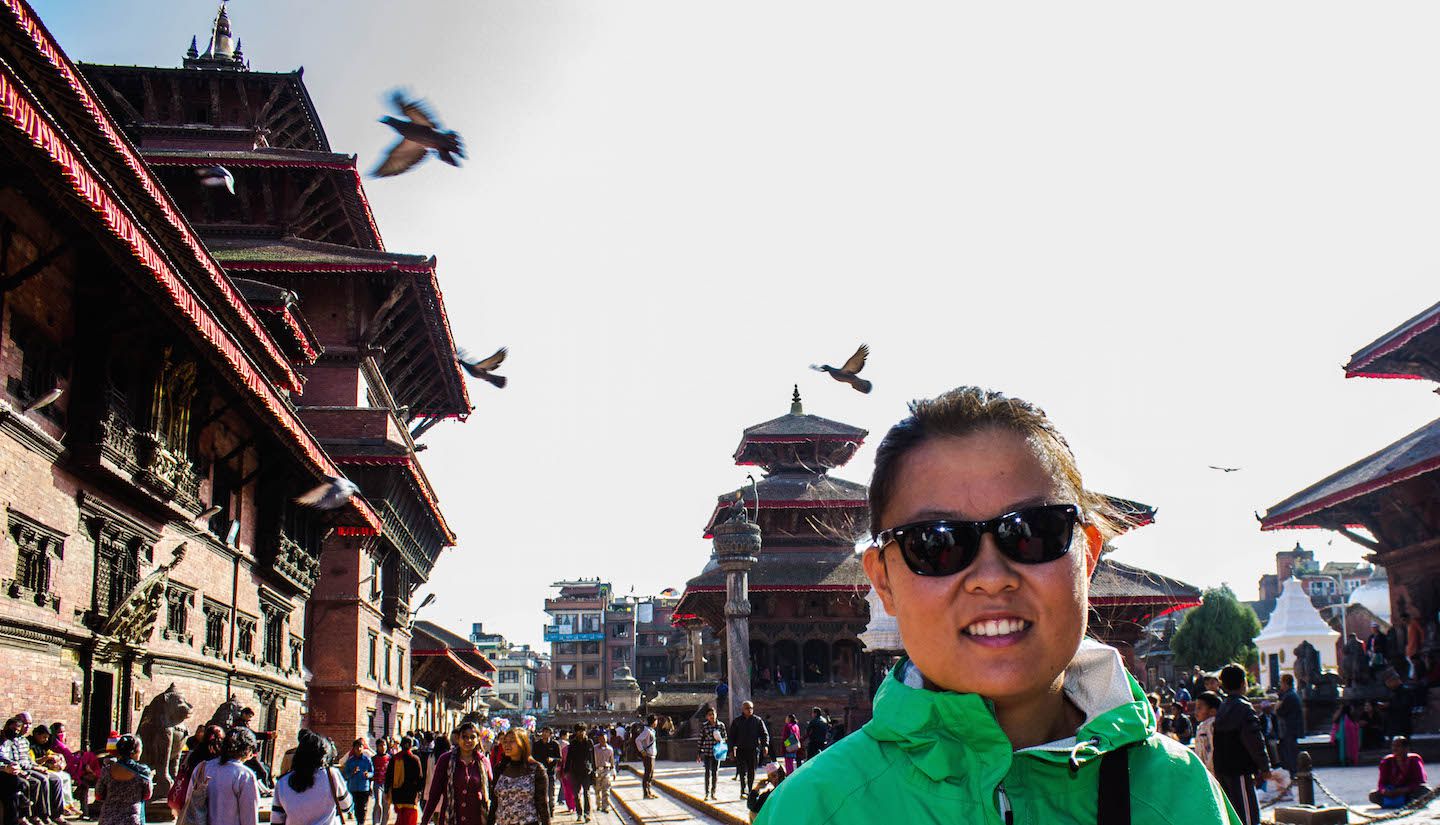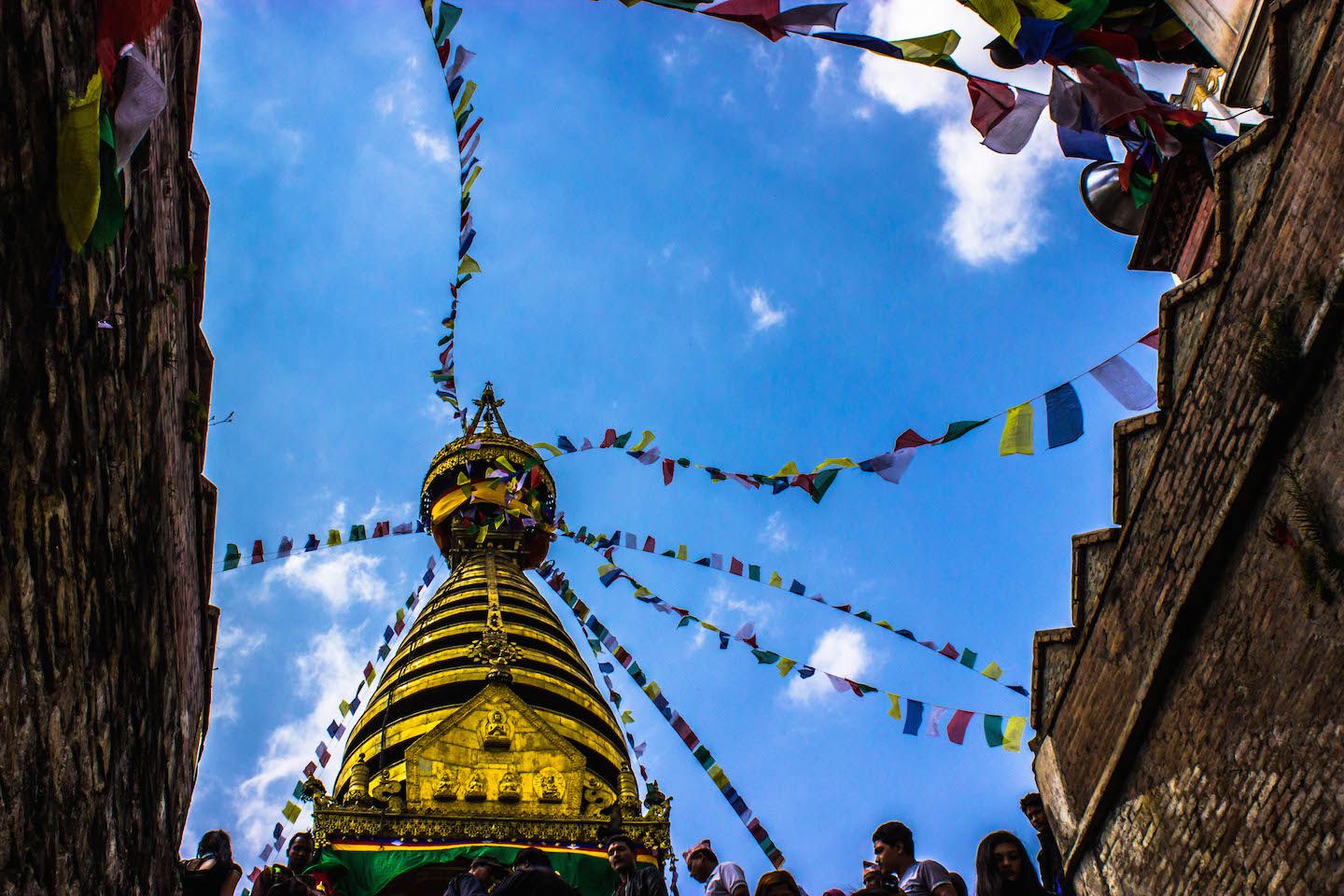Some may consider our visit to Nepal a failure as we were not able to achieve the one main goal we had: trekking the Annapurna Circuit. Surprisingly, despite the less-than-ideal situations we faced in Nepal, we still left with an overall positive impression and the desire to come back again someday in the future. As they say, it’s more about the journey than the destination. We may not have always reached where we wanted to go in Nepal, but we enjoyed trying to get there.
His Final Thoughts

Nepal was an interesting country. Before I ever set foot there, I learned that Nepal has a curious but strange time zone. Being on UTC+5:45, Nepal is one of the two official time zones that have a 45 minute increment, which apparently is an approximation of Kathmandu’s mean time (5:41:16 ahead of UTC). If that wasn’t enough, they also have a weird lunisolar calendar that is 56.7 years ahead of the Gregorian one, i.e. they are in year 2072. Those facts made me realize I was in for something completely different than what I was used to.
If Nepal’s calendar was in the future, its infrastructure stagnated in the past. Roads were generally dusty, polluted, in poor condition, and people had a bad habit of littering everywhere. Cars were small, dirty and falling apart, though a nice car would probably be destroyed by all the potholes anyway. Despite the huge potential for hydroelectric power, about 50% of the population still doesn’t have access to electricity. For those who did have access, the daily 12-hour power cuts in the cities didn’t make things that much better. During our stay in Nepal, the only international airport in Kathmandu also demonstrated itself to be unprepared for emergencies and bad weather.
A few characteristics of people in Nepal stuck out for me. First, they have extremely small person space. Strangers have no qualms about touching you or using you as support (I had personal experience during our bus ride from Kathmandu to Besisahar). Boys walk on the streets holding hands and you can often see them sitting on each others laps. Nepalese people also seem to be rather fatalistic. This goes hand-in-hand with being pretty religious, as was evident in the many prayer locations. I guess if I had to trek up and down the mountains regularly, I would probably also feel better about my fate being in some higher power’s hands. Having said those things, Nepalese people in general were very welcoming, especially when it came to trekking!
Considered the “ceiling of the world” with eight out of ten of the world’s highest mountains, Nepal’s main tourist activity is trekking. Preparing for the trek took some time, but we ultimately chose to do everything ourselves – pack our own bags, plan our own itinerary, and lead our own way up. The Annapurna Circuit was definitely doable without a guide or porter. Even though we did not finish the entire circuit, I am really proud how well we were able to take care of ourselves. Next time, we will know exactly what to do and the budget we need.
I cannot adequately describe the feeling of trekking through the Annapurna Himalayan Range – it was one of the coolest things I’ve ever done. The way up to the first villages might have been too dangerous in hindsight with the jeep we took, but the scenery throughout the rest of the trek was simply stunning. From the green valleys of the lower altitudes to the snow covered mountains in the higher altitudes, the views surprised me with every turn, with every step. The mountain views were stunning, spectacular, absolutely unparalleled. Even though our trek was interrupted due to weather and lack of reliable information from Nepalese authorities, I definitely want to go back in the future to not only try the Annapurna Circuit again, but to explore other trekking areas. As they say, once is not enough.
Her Final Thoughts

Our first venture into South Asia, I found Nepal to be refreshingly different than all the places we had been so far. We were getting further from the parts of Asia that I was familiar with, but yet the cooler weather and the mountainous terrain were more like home than I expected. The streets of Kathmandu had their own special brand of chaos – it was the uneven roadsides and short buildings one next to the other. Prayer flags flying in the wind and spinning prayer wheels were just so Nepalese.
Weather was a huge factor for us in Nepal. I have yet to go to another country more dependent and influenced by nature. When the sun was out, it was warm and bright and beautiful. When the sun set, everything became cold and dark and it seemed like the day already ended then, especially in the mountains. At least we learned to adopt a sleep-early, rise-early schedule. We found ourselves often at the weather’s mercy. When our attempt at trekking the Annapurna Circuit was cut short, we were completely helpless to the snow and avalanches blocking the trail. For the mountain view in Pokhara, we had no choice but to wait for the skies to clear. When our flight out to India was cancelled due to fog and thunderstorms, we could do nothing but try again the next day and hope for the best.
We did not traverse Nepal nearly as extensively as we usually do in previous countries. This was mostly due to a lot of our time devoted to trekking, but also because other parts of the country were not well-developed for tourism. Kathmandu and nearby Patan were undoubtedly the center of the nation, while Pokhara was a more laid-back lakeside town and another trekking hub. We considered a safari in Chitwan National Park, but the activities were mostly elephant-oriented which we had done before. Other than that, it’s pretty much trekking the numerous mountain trails.
I really appreciated Nepalese food. It probably isn’t one of my top worldwide favourites, but we had a good time trying out local specialties. Dal bhat was by far what we had most, and this rice, curry, dal and vegetables platter fueled us along with the rest of the nation. Tibetan-style cuisine was present in the form of noodle soups like Thukpa and Thenthuk. I found Nepalese dumplings (momos) to be familiar, but the khaja snack set to be exotic. While I did miss fresh vegetables and fruits, I was overall impressed with the variety, especially in the mountains.
Nepal also gave us a new definition for luxury. Everyday amenities at home became fancy. After being cold for the initial two days in Kathmandu after six months of tropical climate, the new guesthouse we moved to with heating in the room seemed posh. After washing myself with a bucket of hot water that I had to mix with another bucket of cold water on one occasion in a teahouse high in the mountains, I felt so rich to have a normal hot shower again. With regular power cuts, having electricity whenever we came back to our room was a cause for celebration. Nepal reminded us not to take things for granted and to be grateful for what we have. I hope I will remember that, long after this trip is over.
Nepal – we will be back!

